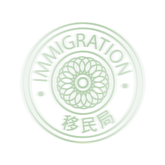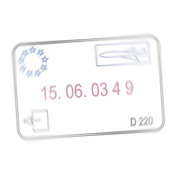Monday, August 4, 2008





Dietary intake is important to health. Everyone hears ABOUT this, but relatively few take the time to LEARN it. WHY is dietary intake so important? Let's look at the abstract fundamentals--Your body is basically composed of dirt and water. While the cells of your body are alive, they are more like growing and living plants than inanimate dirt, but once those cells die off, compost they become. Where does a plant get it's nourishment? From the dirt and water that is found in the environment where it grows. Where do your body's cells get their nourishment? From the "dirt" and fluids in which the cells find themselves. The make up of your body's soil comes from the food stuffs that you eat. If you don't eat adequately, you don't have "good soil" and the cells of your body start to die off. This is overly simplified, but you get the picture.
So what you eat is important. Both quantity AND quality. In this era, most look to be TOLD what to eat and when. I guess the school lunch programs that we all grew up under really DID condition us to let others make our food choices FOR us. Or people will just grab something convenient to munch on without giving ANY thought that what they are consuming IS what is used to build their bodies. Bad timbers generally make for a weak house.
Also commonly in this era, where most are deriving their energy from food rather than from physical activity and other energy producing endeavors, we consume too great a quantity of food. Ever see a plant SMOTHERED in dirt--leaves and all? It doesn't grow very well.
Quality of food is also important, for food that has little or no nutriment--vitamins, minerals, and other nutrients, most of which STILL have not been fully identified--does little to help the plant to grow This necessitates a large quantity of the same substance to get a small quantity of nutrients. But food that is HIGH quality will require but a small amount of food to provide a large amount of nutrients.
The historic Templars, in their Rule adopted by Bernard of Clairvaux, addressed some of these dietary concerns. Most of them would serve our modern Templars well, presuming that the food stuffs used are fresh, good quality meats and produce. The menus suggested to the Templars are addressed in rule 26 through 30 and outline a sensible eating plan suitable for us all.
The general principle was that meat centered meals were limited to three times a week, except for the festive holidays. All of the other meals were of vegetables or other dishes, and one day a week was reserved for "lenten meat", which is today defined as eggs, milk products, condiments made of animal fat, meat juices and liquid foods made from meat--such as chicken broth, consomme, soups cooked or flavored with meat, meat gravies or sauces, as well as seasonings or condiments made from animal fat. Even bacon drippings which contain little bits of meat may be poured over lettuce as seasoning. Some permitted fish, which works very nicely with the modern observance that seafood should be a key component to most diets.
The "Templar Diet" also called for fasts on certain days and during certain times of the year. For most of us "fast" means "going without food and drink. But in religious circles "fasting" merely means observing a disciplined diet as a means of self discipline, and a stimulus to spiritual observance. Mostly these fasts were during the winter months and coincided with the reduced activities associated with the colder months, as well as the decreasing supplies of food during this time of year. BUT, those who were sick or infirm were supposed to continue with their normal diets so that they might not suffer.
The Templar diet called for serving two to three meals per day, skipping a meal during the times of fasting. This will result in a general diet such as this:
-
•Sunday--Eat one or two meat-centered meals and meal(s) of vegetables and other protein sources such as seafood, legumes, nuts, eggs, etc.
-
•Monday--Eat two or three meals of vegetables and other protein sources, such as seafood, legumes, nuts, eggs, etc.
-
•Tuesday--Eat one meat-centered meal, and meals of vegetables and other protein sources.
-
•Wednesday--Eat two or three meals of vegetables and other protein sources, such as seafood, legumes, nuts, eggs, etc.
-
•Thursday--Eat one meat-centered meal, and meals of vegetables and other protein sources.
-
•Friday--Eat two or three meals of vegetables, seafood, or other protein sources, such as seafood, legumes, nuts, eggs, etc.
-
•Saturday--Eat two or three meals of vegetables and other protein sources, such as seafood, legumes, nuts, eggs, etc.
The general time of fasting for the Templars included from November through Spring time. During this season they skipped one meal per day--consuming 1-2 meals per day. From Spring time through October two meals per day were recommended.
But even during the times of fasting, the Templar Rule noted that at the end of the working day and before evening activities, they SHOULD eat a light snack--a very light meal and not the same menu as a full meal, all components of the meal eaten in moderation.
Another key component of the Templar Diet is thankfulness. After their meal, the Templars would, in silence, give thanks for the food provided to them. They would either go to a nearby church for this, or do so in the place where they had eaten. Thankfulness is a key provision of the Templar Diet, for without thankfulness there is unmindfulness. With unmindfulness comes a lack of awareness and taking for granted. Provision for one's sustenance, even in this modern era of "self-sufficient" men and women, should never be taken for granted, nor treated in an unmindful way, for what you are given to consume is what WILL become the body that you live in throughout your life.
Now THAT is something to think about, and to be thankful for when there is sufficient quality and quantity of food available.



